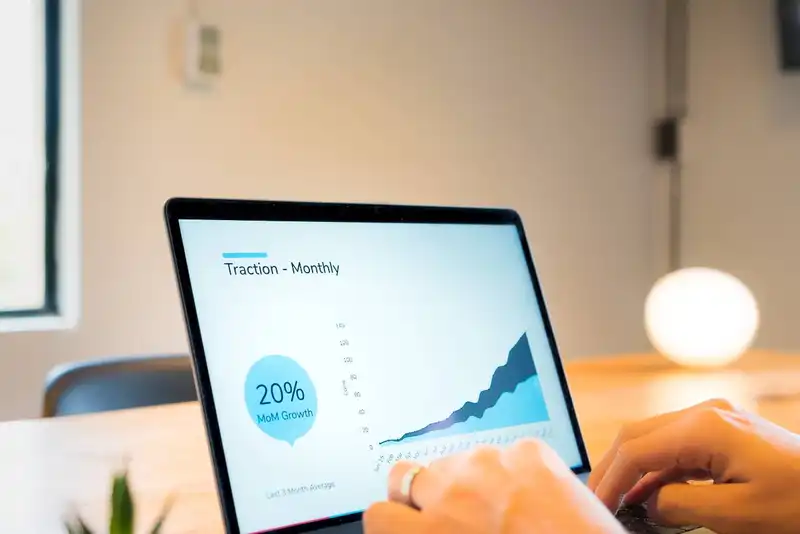What is a Business Intelligence Dashboard- An Introductory Guide
Business owners and decision-makers often make important decisions to increase their revenue stream and maintain daily operations. Though decisions can be made on instinct, having hard data to back it up is more reassuring.
Advanced technology automates this process, saving both time and resources. Here's an introductory guide into the in's and out's of business intelligence tools.
Key Components of Business Intelligence Dashboards

A business intelligence dashboard is a technology that tracks and projects data visualizations that indicate how effectively a company is achieving key business objectives. Some main components of dashboards include-
Big Data Sources
A data source is where the information utilized to run a report originates from. Dashboards cannot function without quality data sources because they serve as the fuel that makes it functional. Connect data sources through a database, flat file, or application program interface (API) to allow the flow of information into the dashboard interface. Effective data management is important for the implementation of business intelligence.
Data Analysis & Visualizations
Since humans are 60,000 more likely to process images over text alone, data visualizations are a key component of business intelligence dashboards. Real-time data visuals include bar graphs, diagrams, pictures, line graphs, and other charts that codify and convey company data to the dashboard user.. For example, a bar graph might be utilized to present revenue that was generated from the current year in comparison to previous years.
Filters
Business users and decision-makers can filter data sets on dashboard solutions to focus on specific information contained in the chart or visual. For example, if an owner wants to see how well a product sold during a given season, he/she can utilize the filtering option to specify the date range. Filters can also include anything from geographic regions to specific goods that were sold.
KPIs
Key performance indicators inform how well a business is performing. Dashboard solutions use different data visualizations, such as charts and tables to display these business metrics. Some key performance indicators include the number of sales made in a given timeframe, annual revenue, and profit margin. Dashboards allow owners to see all of these variables so they can make evaluations.
Navigation Menu Menu bars are utilized to allow users to move back and forth between different dashboards. Navigation menus should be intuitive and user-friendly, allowing for nearly anyone to easily learn how to use the software. As data grows over the years, the information can become more cluttered, so it's important to keep everything organized. Good standard menu bars should include default landing page, main menu, and recently viewed panel.
Benefits of Business Intelligence Dashboards

There are several benefits of business intelligence dashboards, including-
Good Decision-Making
Companies can look at recorded business data to make future business decisions. For instance, a shoe brand like Nike can defer to a sales summary of a newly released model of running shoes. If the sales indicate a decline in sales over a given time period, the brand with an informed mindset can then decide whether to pull the shoes from production altogether or send it back to the manufacturer to alter the design.
Saves Time
Interactive Dashboards save time because the data codifying process is automated. Manual methods include compiling data from different sources oneself and then going through it individually to try and discern patterns. This process takes up valuable employee time and allows for human error.
Flexible Access
Modern dashboard software allow users to access the dashboard through applicable devices, like smartphones, tablets, and laptops/computers. This feature allows the application to be accessed while on the go and in various instances, like during team meetings or while working from home.
Ability to Share Insights Through BI Software
Intelligence dashboard software allow for shareable data, granting approved individuals or departments access to performance metrics. For example, the corporate office might want to see data from the sales department to know how many customers have purchased a specific item that week. They can then use that information to gauge how much new revenue to expect, or whether or not to continue the promotion of that item.
Business Intelligence Dashboards & Best Practices

To create a dashboard, it's best to follow these guidelines-
Implementation Through Project Management & Feedback
Before a business implements a dashboard design strategy, owners should talk to each department and stakeholder in the company to know what key performance indicators they need to evaluate and what report types will best work for that department. It's difficult, otherwise, to conclude what type of information is going to be the most valuable and to whom.
Also, each department has specific objectives that will influence the type of resources are needed. For example, the sales department might need a powerful dashboard that can discern earning capacity based on geographical location. Once owners are informed of the objectives, they can then implement dashboards that will benefit everyone within the company.
Customizing Views & Organizing Data
Dashboard tools should be customized to the needs of the users, and they should be easy to use. Separate customized dashboards are ideal because all concerned parties within the company will have varying objectives and usable metrics to take into consideration.
Once owners create customized dashboards for each department, they can then list the key performance metrics within the dashboard for each department. Customized dashboards typically place these metrics to the left above the fold of the dashboard, as that is where the eyes tend to first look.
Choose Good Visuals
Data visualizations include line graphs, pie charts, treemaps, histograms, box plots, heatmaps, and bar charts. Some graphs are better than others at expressing certain metrics. Line graphs are typically most effective in observing how subject matter performs over a period of time. If a sales department wanted to see how much a certain employee was selling in a 3- month span, a line graph would be a good visual to use.
Ensure Accuracy
Data should be checked for accuracy before it's connected to the dashboard, and also after inaccurate data is purged or deleted from the database. It should also be checked for accuracy periodically throughout the year.
Minimize Coloring
Dashboards that use excessive coloring can affect its readability. Too many bright, saturated colors overstimulate the retina and strain the eye. Visualizations can include minimal coloring, utilizing similar hues of one color. This creates a less discordant experience for users.
Business Intelligence Dashboard Examples
Some frequently used data analytics dashboards include-
Financial Dashboards
These dashboards tell users how the company is performing financially, indicating how much the costs of sales were last year, what was profited or lost, or how much was spent on supplies and resources.
Retail Sales Dashboards
Large retailers use these dashboards because they typically have many different locations and different products. Retail Sales Dashboards demonstrate the performance of different brands, the sales by each store, or sales revenue by region.
Social Media Dashboards
The marketing or content team within the company can utilize social media dashboards to monitor the performance of each company affiliated social media account. These dashboards show insight into how many clicks a post received on Facebook or what demographical group read a certain blog. This can help social media managers curate an effective marketing strategy.
Weather Dashboards
Weather data can be utilized by different companies to predict the demand for certain products. For example, a weather dashboard can show a company how many people are likely to purchase their raincoats based on how often it rained that year. Or theme parks can gauge how many people to expect during a rainy summer since bad weather can affect turnout.









